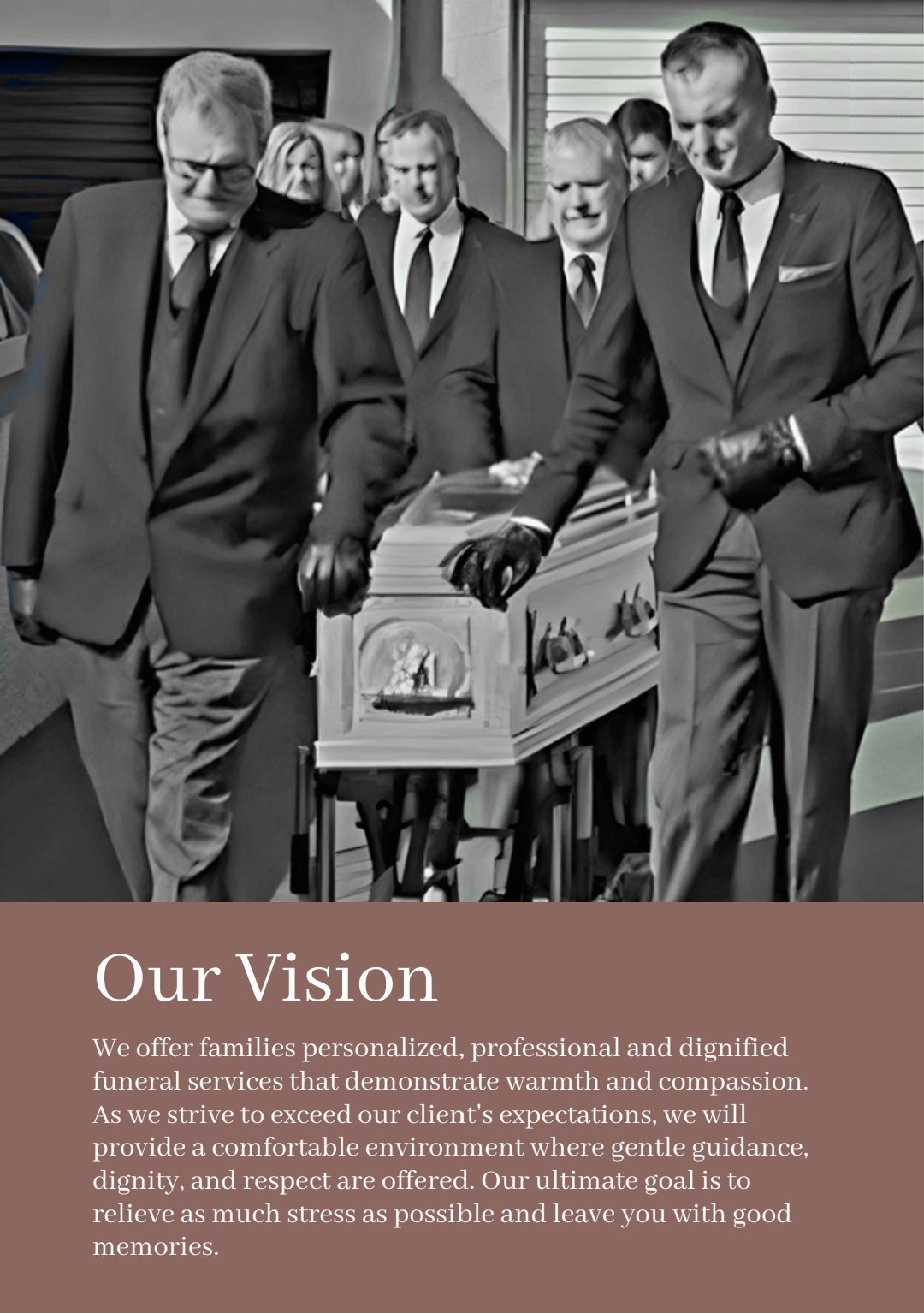Life as an Irish Undertaker: A Journey Through Time - Part 1 of 6: Embalming
/Life as an Irish Undertaker: A Journey Through Time - Part 1 of 6: Embalming
Introduction.
Forty years ago,
I embarked on a journey that would not only become my profession but also a significant part of my life. I became an undertaker in the north of Ireland, a role steeped in tradition and community service. This series of blog posts will take you through my experiences and the evolution of the undertaking profession in Ireland, and the introduction of embalming
The Advent of Embalming in Ireland
When I embarked on my journey as an undertaker nearly four decades ago in 1986, the practice of embalming had only been a part of Irish tradition for about ten years. Prior to its introduction, there was no such service available. The duty of preparing the departed for their final voyage was usually taken up by a member of the local community, often the publican. This individual would “undertake” the task of washing the deceased and laying them out with dignity in a coffin or on a bed, marking the commencement of the wake. This is how the term “undertaker” came into use in Ireland.
The introduction of embalming brought about a significant change in the way we cared for the deceased. In my first 25 years as an undertaker, I would be called to the house where the person had passed away, and the embalming would be carried out there. This practice was in line with the strong Irish tradition that the family’s loved one didn’t leave the house until the funeral, usually two days later.
If the person had passed away in a hospital, the embalming was carried out in the hospital mortuary. After the process, the body would be taken from the hospital mortuary chapel to the family home.
The exact year when embalming started in Ireland is not clearly documented. However, the practice of embalming, in its modern form, began in the early 20th century in the UK. It’s likely that around the same time, it would have been introduced to Ireland as well, given the close geographical and cultural ties between the two countries.
The Intricacies of Embalming
Embalming is a physically invasive process, with special devices implanted and chemicals used to give an appearance of restful repose. The normal waxy-white color of a dead body is replaced with a more life-like tone by the use of dyes in the embalming fluid.
After death, the human body undergoes many changes, one of them being rigor mortis. This is a chemical process where the muscles and limbs stiffen, causing the body to turn rigid. In order to relieve the rigidity and to help the flow of embalming solution into the body, the embalmer gives the body a massage.
Superglue and wires are used to keep the eyelids and mouth closed, in the early days it might’ve been a book or a bandage tied around the head and knotted at the chin!! We’ve seen those unglam images of people sleeping with their mouths open and slack – This is where superglue comes in handy – to fix the expression of the deceased so that they can look like they are naturally sleeping. But when superglue is not enough, jaws might be wired in place and mouths may be stitched closed.
Pacemakers must be removed from the body before cremation as they can explode and cause serious damage to the equipment and the staff working there. Fun fact: Pacemakers can be recycled to help another patient after they are removed from the decedent!!.
Any orifices that might leak are plugged with cotton. As the body’s muscles all relax, so does the sphincter, a muscle that keeps all the…stuff…inside our bladder and rectum. To preserve dignity, maintain hygiene, and prevent unpleasant smells from wafting during the wake, cotton or anal/vaginal (A/V) plugs are used to prevent any leakage from the body.
Eye caps are placed under the eyelids to keep them closed. Nope, your eyes don’t close naturally in death. In fact, for many people, they remain partially open due to muscle relaxation.
Embalming was required for several reasons:
Preservation: Embalming is the art and science of preserving human remains by treating them with chemicals to forestall decomposition. This is usually done to make the deceased suitable for viewing as part of the funeral ceremony or keep them preserved for medical purposes in an anatomical laboratory.
Sanitization: One of the goals of embalming is sanitization. It helps in preventing the spread of diseases.
Presentation and Restoration: Embalming can help restore the person’s appearance, giving an impression of peaceful sleep and wellness. This can be a great comfort for grieving families, especially if they lost a loved one to an illness.
Tradition: In Ireland, it was a strong tradition that the family’s loved one didn’t leave the house until the funeral. Embalming allowed the body to be preserved during this period.
Legal Requirement: In some cases, all bodies must be preserved prior to burial. If a body had to wait for a period beyond 24 to 48 hours for burial and there was no refrigeration option, embalming is required.
It’s important to note that the practice and requirements for embalming can vary based on cultural, religious, and personal preferences, as well as local regulations. Stay tuned for the next part of this series where we will explore further changes and challenges that came with the evolution of the undertaking profession in Ireland.
The Early Days
Reflecting on the traditions of Ireland 50 years ago, it was common for the deceased to be laid out on their own bed during the wake. This allowed family and friends to gather and pay their respects in a familiar and intimate setting. The coffin, in these instances, wasn’t introduced until the morning of the funeral, just in time for the burial. This practice underscored the personal nature of the farewell and served as a poignant reminder of the diverse ways in which we honour and remember our loved ones. It’s a tradition that speaks volumes about the depth and variety of our cultural expressions of grief and remembrance, this practice still take place!!!
The traditional practice of laying the deceased on their own bed during the wake faced challenges, especially in the absence of embalming. Without embalming, decomposition would naturally occur, posing difficulties for grieving loved ones. Families had to delicately manage the body's decomposition, seeking ways to maintain the remains and uphold a respectful environment throughout the gathering, even if the wake lasted several days.
To combat decomposition, families employed various methods. Some relied on cooling the room or using ice packs to slow down the process. Others utilized herbs and flowers to mask potential odors. Despite the challenges, the practice of placing the deceased on their own bed during the wake persisted due to its deep cultural and emotional significance. It served as a personal and intimate way to honor and remember the departed, emphasizing the importance of family and community support during moments of sorrow.
Over time, embalming became more widespread, alleviating some of the difficulties posed by natural decomposition. Embalming techniques effectively preserved the body, enabling longer wakes and providing greater comfort for mourners.
Nevertheless, it is crucial to acknowledge the value of the historical practice without embalming in terms of cultural expression and the profound grief experienced by communities. Although embalming is now more prevalent, the memory of these earlier traditions and the cultural diversity they represent continue to be respected and cherished.
The introduction of embalming marked a significant shift in the undertaking profession in Ireland. However, despite these changes, the core values of community involvement and respect for the deceased remained at the heart of our work.
In the next part of this series, I will explore further changes and challenges that came with the evolution of the undertaking profession in Ireland. Remember, every end is just a new beginning. Stay tuned for
At W.J. O’Donnell and Son Funeral Directors, our team believes that our work is not complete after the funeral of a loved one and you are burdened with grief. We understand that it’s beneficial to talk during these difficult times, and we are always available to lend an ear. Feel free to call us or visit our funeral homes in Co Antrim or South Derry during our opening hours. We are here for you. For additional bereavement support, please visit our guide at nifunerals.com/bereavement-advice
Support our cause this Christmas. Your donation can make a difference in the life of someone who is coping with grief.
“Preservation - Part 2 of 6”…
coming in two weeks. Until then, take care and keep sharing these valuable experiences as I leave you with this lovely though. WJ














